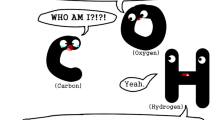
Access this book
Tax calculation will be finalised at checkout
Other ways to access
About this book
Similar content being viewed by others
Keywords
Table of contents (9 chapters)
-
Front Matter
-
Back Matter
Editors and Affiliations
Bibliographic Information
Book Title: Inorganometallic Chemistry
Editors: Thomas P. Fehlner
Series Title: Modern Inorganic Chemistry
DOI: https://doi.org/10.1007/978-1-4899-2459-9
Publisher: Springer New York, NY
-
eBook Packages: Springer Book Archive
Copyright Information: Springer Science+Business Media New York 1992
Hardcover ISBN: 978-0-306-43986-5Published: 30 June 1992
Softcover ISBN: 978-1-4899-2461-2Published: 19 June 2013
eBook ISBN: 978-1-4899-2459-9Published: 22 November 2013
Series ISSN: 0891-4540
Series E-ISSN: 2945-5057
Edition Number: 1
Number of Pages: XIV, 401
Topics: Solid State Physics, Spectroscopy and Microscopy, Condensed Matter Physics, Crystallography and Scattering Methods, Characterization and Evaluation of Materials



